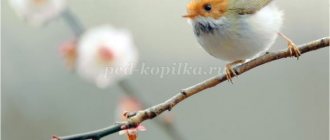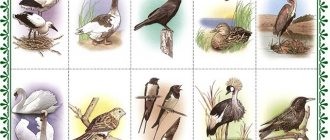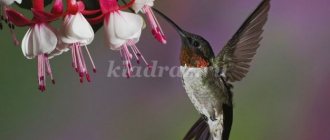General information
Birds help people a lot. Some bring benefits in the form of meat and eggs, while others help fight plant pests. Their body structure is ideal for flight and is covered with feathers to retain heat. In the warm season, everything around is filled with beautiful sounds thanks to them. But when cold weather sets in, everything calms down. It becomes too difficult for the birds to get food for themselves, so they are divided into two camps.
The first ones fly away to warm regions, covering a long distance, not wanting to stay and adapt; such birds are called migratory. The latter, on the contrary, remain, adapt to the cold, find ways to obtain food and winter well in their usual regions; such birds are called winterers.
Owl
The eagle owl is the largest bird among the owls, its height is 0.6–0.8 m, its wingspan is up to 1.9 m. It is distributed throughout Eurasia, except the far north. Hunts by planning. It is a wintering sedentary species.
The plumage is motley, brown tones, loose, absorbs the sounds of flight. There are feathers sticking out on the head, like “ears”. The paws are completely covered with feathers, the claws are large. Amber eyes stand out on the facial disc. During courtship, partners call each other loudly, forming permanent pairs.
Thanks to the special structure of the spine, the eagle owl's head can even turn backwards.
Hunts in the evening all night. It feeds on rodents, hares, birds, frogs, and fish.
Nests are located on the ground, in the roots of trees, among brushwood. The female incubates, the male feeds her and the chicks. The chicks are covered with down and blind. At 2 months they begin to fly, at 3–4 months they leave their parents.
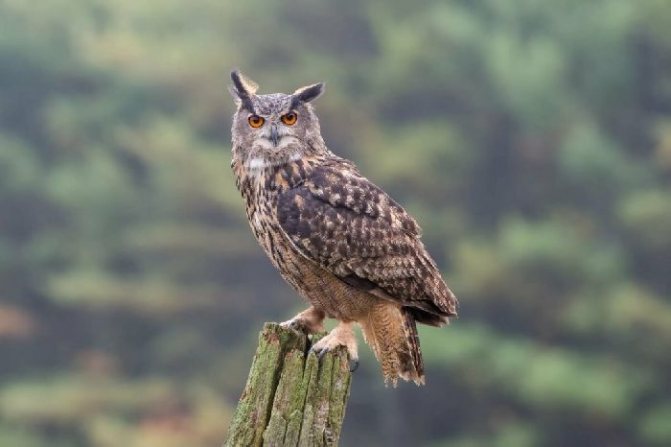
Rice. 3. Eagle owl.
The most famous wintering birds
Due to their structure and ability to withstand cold weather, there are birds in the region that do not leave their native land in the fall . Among them are:
- Pigeons
. These birds are known to everyone. At any time of the year they can be seen in parks and squares. Pigeons are distinguished by the fact that they are not just sedentary, but also territorially attached to a place. When a dove flies away, it will always return. People took advantage of this by inventing pigeon mail. Their body temperature is so high (about 41 degrees) that no frost can overcome these birds. They are omnivores, which helps them obtain food in winter. - Sparrows
. No less famous birds in Russia. These little nimble birds are everywhere. They are distinguished by their sociability, excellent memory and cheerful chirping. It is the sparrows that are the very first to rejoice at the coming spring, chirping loudly, thereby conveying their cheerful mood to those around them. - Tits
. These yellow-breasted birds are not at all inferior to their brothers, but still not as nimble as, for example, sparrows. However, you can often find a flock containing both sparrows and tits. In the warm season, they live in forests and protect them from pests by eating caterpillars and insect larvae. When it gets cold, tits fly to a city or village to make it easier to find food for themselves. - Crossbills. Birds with bright colors and an interesting beak designed for removing grains from cones. These birds are known for their ability to have offspring and sing in severe frosts. Excellent acrobats, who easily climb trees and, if necessary, reach a pine cone, can hang upside down on a branch. Thanks to its love for cones, the crossbill protected itself from enemies. The fact is that due to the consumption of cone grains, which contain resins from coniferous trees, the bird’s meat becomes bitter, so no one attacks the crossbills.
- Crows
. These birds, like other representatives of the list of wintering birds, remain in their native lands with the onset of cold weather. Crows are very smart. Studies have shown that their mental abilities are close to the development of a five-year-old child. Their intelligence proves their ability to defend their nests from attacks by enemies, throwing stones at the latter. Although crows themselves love to destroy other people's nests. These birds are unpretentious in food, which allows them to easily endure harsh winters. True, crows are lovers of carrion, but in winter such delicacies are quite difficult to find, so they are content with what they find. - Bullfinches
. The most striking representatives of wintering birds. During the cold season, these little birds are forced to fly to the city to facilitate their search for food. Bullfinches are distinguished by their sonorous trills; we can say that their singing is unique. Birds in winter feather their feathers and turn into bright balls that decorate the trees. Apparently, this is why the bullfinch has become a kind of symbol of winter. Often his photographs and images are placed on New Year's products and cards. The favorite delicacy of bullfinches is rowan, but they do not eat the pulp of the fruit, being content only with grains. - Waxwings
. In winter, completely non-local residents appear in cities - these are waxwings. They lead a nomadic rather than sedentary lifestyle, but still do not fly far. They live in the north, and during the cold season they fly to the southwest to make life easier during difficult times of the year. In summer, these birds prefer insects and their larvae, and in winter they are content with various berries: rowan, barberry, hawthorn and others. But since the berries are quite heavy for the intestines of waxwings, therefore, partially digested, left after the birds, they sprout more easily in the spring. So, birds help grow new bushes. They are on the list of birds wintering in Siberia. - Jays
. These cautious birds also remain to winter in their usual areas, with the exception of northern places, from where they migrate to warmer regions. They are careful because they are guardians of safety for other birds. They listen sensitively and tell everyone around them that danger is coming. The bird is so careful that it is very difficult to see it. The mockingjay is called the mockingjay for its ability to reproduce various sounds and voices. Dog barking and door squeaking are not a problem for the jay to imitate. They love to eat in hazel trees, especially acorns. She is distinguished by her ability to bury nuts in the ground for the winter, and in such quantities that not only the workers themselves, but also other inhabitants of the forest feed on the reserves all winter. - Nuthatches
. Another representatives of wintering birds. Like jays, they are distinguished by their ability to stockpile. Nuthatches hide them in trees, not far from the nest. But, unlike jays, these birds are not at all so hospitable. They do not allow anyone, not even their brothers, to get close to their supplies. When choosing a place for a nest, nuthatches look for a tree with a hollow and set up their home there. Like many birds, in the warm season they feed on insects, and in the cold season they eat everything they have stored and various berries. They lead a mostly sedentary lifestyle, but sometimes roam with tits. - Woodpeckers
. Everyone knows the red-headed birds that tap out simple melodies by hitting wood with their beaks. Forest orderlies - this is what we have known about woodpeckers since childhood. They rarely leave their homes, and only in the most difficult times do they migrate to a more suitable environment. However, if the woodpeckers fly away, they will not return. Birds, landing on a tree, begin to study it from the bottom up, climbing in a spiral, hollowing out insects from the bark. In the warm season they feed mainly on tree pests, and in winter on various grains, nuts and seeds. - Magpies
. Birds belonging to the non-migratory class. It is quite rare to appear near people in the summer, but the winter need for food forces even a magpie to fly to the feeder in the hope of kind people. Very cunning and dexterous. They can easily outwit and eat even a dog. Famous thieves. So they try to steal something. Magpies are unpretentious in food, so they will be happy with any prey - from berries to newborn chicks from someone else's nest.
This list can be continued for a very long time; wintering birds, their names and photos can be found in various sources.
The information is collected bit by bit in encyclopedias prepared by scientists who study birds. But, besides those who stay at home, there are representatives who prefer to bask in the sun during the cold, harsh winter and return home only in the spring.
Banding method: what it is, who does it and why
To find out where birds migrate, how long they fly, what their life expectancy is, and where a particular species nests, scientists use the ringing method.
This is a way to count birds. The bird is caught and a metal ring with a specific code, information about the country and the organization involved in the research is placed on its paw.

What kind of ring could it be?
Bird ringing rings are made from aluminum or stainless steel. This method takes into account what species the individual belongs to - migratory or wintering. In cold weather, a stainless steel ring can cause discomfort to the bird.
The method of ringing birds is inconvenient, because in order to read the code on a metal passport, the winged individual must be caught again. Scientists have recently developed a color banding system. Birds caught and ringed in 2009 wear purple rings, those caught in 2010 wear orange rings, and so on.

This method helps you see birds from afar and even make out information from the ring in a photo taken from the ground. Multi-colored rings are made of plastic.
Bird ringing is carried out at special ringing stations.

This is a facility where scientists, ornithologists, volunteers work - people interested in counting birds. If several decades ago, birds were caught one by one and banded, today there is mass catching and large-scale banding. Ornithologists can use large traps and nets to capture entire flocks of birds.
The ringing method proved that not all migratory birds fly south. Most move to the west or southwest for the winter.
Why do bird ringing stations work?
The work of bird ringing stations helps to learn new information about the life of winged birds.
Why are rings put on the paws of pigeons and parrots?
Sometimes you can see a pigeon with a ring on its foot. The bird is not migratory, then why is pigeon ringing used by ornithologists?
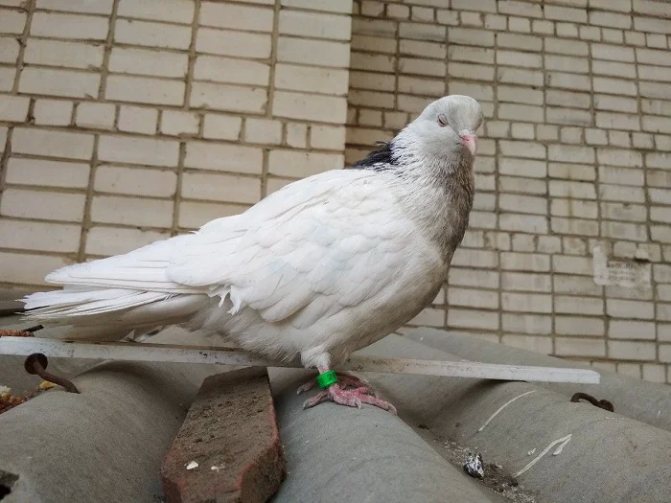
Those pigeons that are bred are ringed. After birth, a ring is placed on their paw indicating the date of birth, information about the parents, the color of the plumage, and so on.
Those who breed parrots also band them. Banding budgerigars is a kind of birth certificate. If the parrot flies away or gets lost, based on the data on the ring, it will be possible to determine whose bird it is. The ring is put on when the budgie is 6-7 days old; it can be removable.
Ringing a parrot is convenient when purchasing a bird at a pet store. Using the data on the ring, you can find out information about the age, parents, and place of birth of the individual.
It is important to remember that birds need human help. It is especially necessary for those birds that do not fly to warm countries, but remain to spend the winter.
List of migratory birds
There is also a wide range of warm-blooded vertebrate animals capable of flight that leave warm regions with the onset of cold weather. Most of them are familiar to everyone, or many have seen them at least in a picture.
Stately rooks
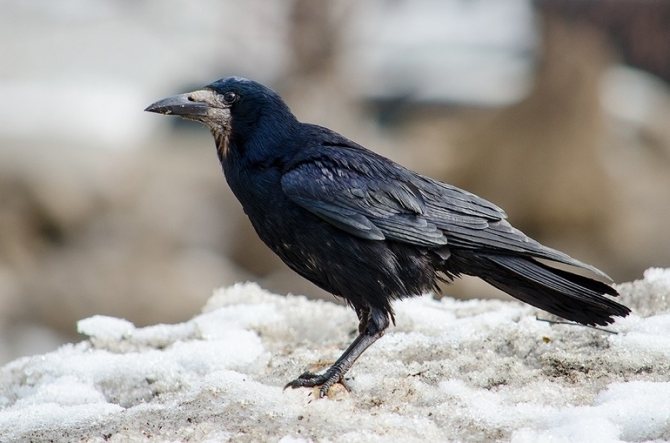
If you read the description of this bird, it will seem that we are talking about a raven. Indeed, these birds from the corvid class are very similar to each other. But, unlike their relatives, rooks are migratory birds. In ancient times, it was the arriving rooks that symbolized the imminent arrival of spring. They fly home the very first, as soon as a small thaw appears in the snow. An interesting fact about rooks is that the birds make themselves swings from branches to relax. They can swing on a homemade swing for a long time. Rooks are unpretentious in food, but despite this, they lead a migratory lifestyle.
Cute swallows
“A swallow flies towards us with spring in the canopy” - these lines from Pleshcheev’s children’s poem were not written in vain, since this bird is another messenger of the coming spring. But swallows are still conditionally migratory birds, it all depends on what climate surrounds them in the place of settlement. From Russia, they prefer to leave their homes during cold weather, since the air in winter is too cold for small birds. Swallows differ in their behavior:
- are not afraid of people;
- They build their nests directly on houses.
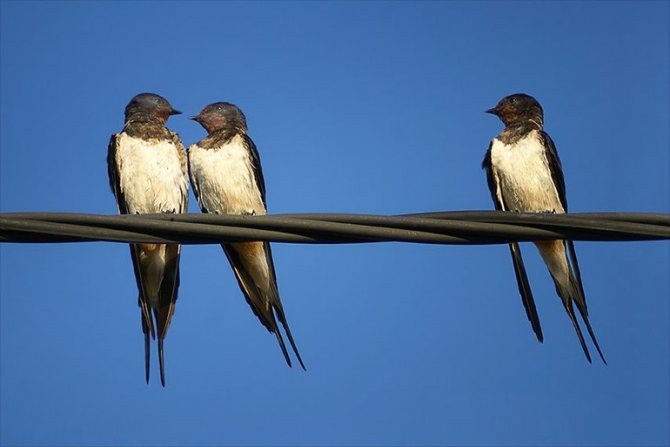
If this happens, then it is considered a good omen to have a swallow’s nest under your window. But swallows are also very beautiful and fast. Their flight speed is about 120 km/h. In the summer you can observe a very funny picture: when a huge flock of chicks learns to fly, the entire sky, not high from the ground, is strewn with black dots, which every now and then fall to the ground or wires in order to rest.
Song larks
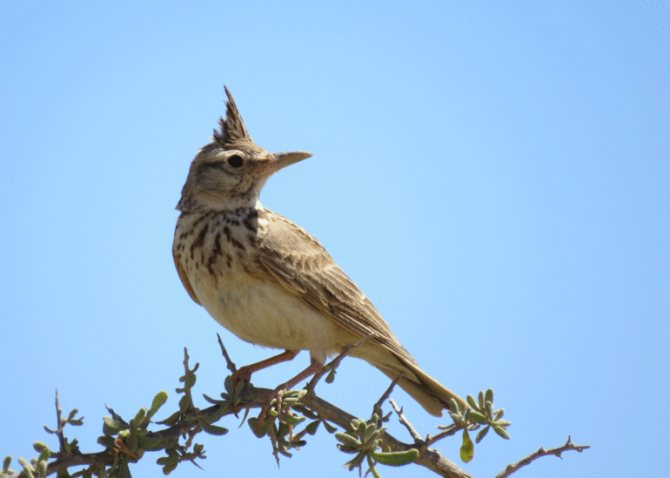
One of the most songbirds. Their trills have been spreading since the end of March. Birds are so carried away by their singing that they forget to build a nest on time, and begin this activity much later than their fellow birds. Larks are unpretentious when it comes to food, so they eat whatever they can get. It is interesting that larks build their nests in secluded places, but not in trees. Their homes can be found in the thick of bushes, in the grass, even under stones.
Melodious nightingale
Well-known singers. It is rare to meet a person who, at least once in his life, on a quiet summer evening, would not indulge in daydreaming while the nightingale sings. Against the background of the rustling of leaves and the evening sunset, their trills sound even more romantic. Their beautiful voice compensates for their modest appearance, since these birds are small with nondescript coloring . The predominant colors are:
- dark brown;
- grey;
- brown;
- black.
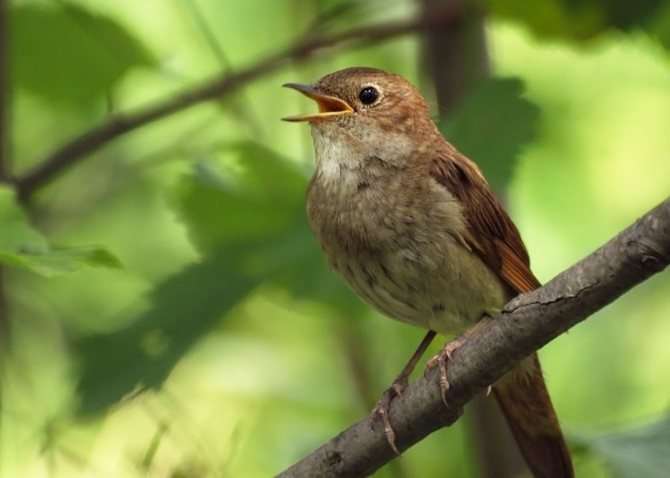
In winter, they fly to more southern regions of the planet.
Unlike their feathered counterparts, nightingales fly home quite late - at the end of May. By the way, the male nightingale entertains the female with his singing while she lays and incubates eggs. They are very secretive and cautious, so you rarely get to see them.
Copycat starlings
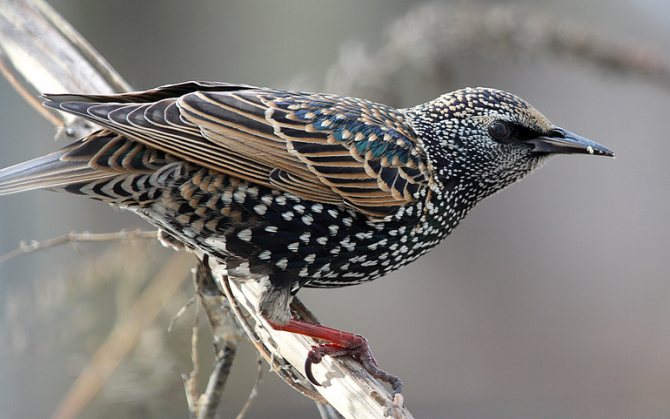
Capable of reproducing various sounds, including the meowing of a cat. Looking at the images of the starling, you can understand from its variegated color that it is a joker who fakes the voices of his relatives . Depending on their habitat, they are conditionally migratory. They fly a large number of kilometers to rest in the winter and return to their homeland in the spring.
It happens that the cold has not subsided, but the birds have already returned, then it is very difficult for them, sometimes the weakest die. Residents of warm countries are not at all very fond of starlings for their huge clusters and loud chirping. Due to their large accumulations, they often cause damage to crops and berries. But still, starlings bring more benefits for exterminating pests. People make birdhouses for them, and the birds happily hatch their eggs in them.
Long-legged stork
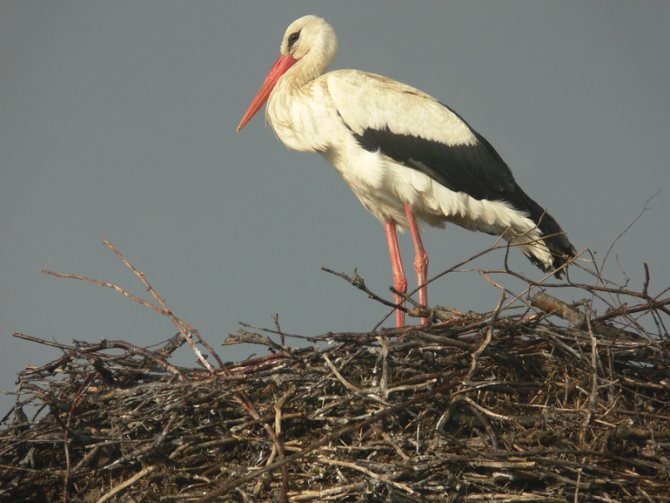
This is such a curious character that he even became the hero of Bianchi’s story “Who Sings What.” Externally, it is a huge bird that amazes with its majesty. Representatives of this species build large nests on the roofs of houses and water towers. Storks are monogamous and choose a mate for life. In the summer they stay in pairs, and in the winter they gather in large flocks and fly south. The amazing thing is that during the flight the bird even manages to rest a little . The sleep is not long, about 15 minutes, but it is enough to continue the long journey. Upon returning home, they return to their ancestral nests, sometimes the homes are inherited. The stork's main delicacy is frogs, which is why birds choose wetlands as places to live.
